Papers by Barbara Romanowicz

Geophysical Journal International, Dec 9, 2013
A general approach for constructing numerical equivalents of time-reversal mirrors is introduced.... more A general approach for constructing numerical equivalents of time-reversal mirrors is introduced. These numerical mirrors can be used to regenerate an original wavefield locally within a confined volume of arbitrary shape. Though time-reversal mirrors were originally designed to reproduce a time-reversed version of an original wavefield, the proposed method is independent of the time direction and can be used to regenerate a wavefield going either forward in time or backward in time. Applications to computational seismology and tomographic imaging of such local wavefield reconstructions are discussed. The key idea of the method is to directly express the source terms constituting the time-reversal mirror by introducing a spatial window function into the wave equation. The method is usable with any numerical method based on the discrete form of the wave equation, for example, with finite difference (FD) methods and with finite/spectral elements methods. The obtained mirrors are perfect in the sense that no additional error is introduced into the reconstructed wavefields apart from rounding errors that are inherent in floating-point computations. They are fully transparent as they do not interact with waves that are not part of the original wavefield and are permeable to these. We establish a link between some hybrid methods introduced in seismology, such as wave-injection, and the proposed time-reversal mirrors. Numerical examples based on FD and spectral elements methods in the acoustic, the elastic and the visco-elastic cases are presented. They demonstrate the accuracy of the method and illustrate some possible applications. An alternative implementation of the time-reversal mirrors based on the discretization of the surface integrals in the representation theorem is also introduced. Though it is out of the scope of the paper, the proposed method also apply to numerical schemes for modelling of other types of waves such as electro-magnetic waves.
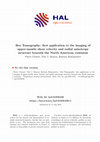
Geophysical Journal International, Feb 27, 2018
The EarthScope Transpotable Array (TA) deployment provides dense array coverage throughout the co... more The EarthScope Transpotable Array (TA) deployment provides dense array coverage throughout the continental United States and with it, the opportunity for high-resolution 3-D seismic velocity imaging of the stable part of the North American (NA) upper mantle. Building upon our previous long-period waveform tomographic modeling, we present a higher resolution 3-D isotropic and radially anisotropic shear wave velocity model of the NA lithosphere and asthenosphere. The model is constructed using a combination of teleseismic and regional waveforms down to 40 s period and wavefield computations are performed using the spectral element method both for regional and teleseismic data. Our study is the first tomographic application of 'Box Tomography', which allows us to include teleseismic events in our inversion, while computing the teleseismic wavefield only once, thus significantly reducing the numerical computational cost of several iterations of the regional inversion. We confirm the presence of high-velocity roots beneath the Archean part of the continent, reaching 200-250 km in some areas, however the thickness of these roots is not everywhere correlated to the crustal age of the corresponding cratonic province. In particular, the lithosphere is thick (∼250 km) in the western part of the Superior craton, while it is much thinner (∼150 km) in its eastern part. This may be related to a thermomechanical erosion of the cratonic root due to the passage of the NA plate over the Great Meteor hotspot during the opening of the Atlantic ocean 200-110 Ma. Below the lithosphere, an upper-mantle low-velocity zone (LVZ) is present everywhere under the NA continent, even under the thickest parts of the craton, although it is less developed there. The depth of the minimum in shear velocity has strong lateral variations, whereas the bottom of the LVZ is everywhere relatively flat around 270-300 km depth, with minor undulations of maximum 30 km that show upwarping under the thickest lithosphere and downwarping under tectonic regions, likely reflecting residual temperature anomalies. The radial anisotropy structure is less well resolved, but shows distinct signatures in highly deformed regions of the lithosphere.
HAL (Le Centre pour la Communication Scientifique Directe), Jun 6, 2016
HAL is a multi-disciplinary open access archive for the deposit and dissemination of scientific r... more HAL is a multi-disciplinary open access archive for the deposit and dissemination of scientific research documents, whether they are published or not. The documents may come from teaching and research institutions in France or abroad, or from public or private research centers. L'archive ouverte pluridisciplinaire HAL, est destinée au dépôt et à la diffusion de documents scientifiques de niveau recherche, publiés ou non, émanant des établissements d'enseignement et de recherche français ou étrangers, des laboratoires publics ou privés.
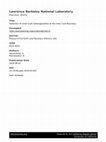
Physics of the Earth and Planetary Interiors, Aug 1, 2018
The hemispherical pattern of seismic velocities in the uppermost inner core has been described at... more The hemispherical pattern of seismic velocities in the uppermost inner core has been described at the global scale in many studies. In this paper, we investigate shorter scale heterogeneities in the vicinity of the Inner Core Boundary (ICB) using differential travel time and amplitude measurements between the pair of core phases PKP (DF) and PKiKP. Seismic events occurring close to Sumatra and recorded at USArray stations in the distance range 132-142°are used to investigate the velocity and attenuation structure at the ICB and in the uppermost 100 km of the inner core beneath Eastern Russia. In this distance range, PKP(DF) and PKiKP are difficult to separate due to their proximity in travel time. We present a new method based on the envelope of the seismic signal to identify them, following which we measure differential travel time residuals and amplitude ratios by comparison with synthetics computed using the Direct Solution Method, which allows us to take into account the correct phase shift of the PKiKP. We found that, in our region of study, the compressional velocity is slower in the uppermost inner core than the AK135 model. However, the sampled region is located in the Eastern hemisphere generally considered as faster and more attenuating than the AK135 model. This suggests significant regional departures from the simple hemispherical pattern reported in the literature. We also deduce from the amplitude ratios that the attenuation is stronger than the global average at the top of the inner core in this region, as expected from its location in the eastern hemisphere. Our results confirm the presence of a low attenuation zone at the top of the inner core, followed by a highly attenuating layer centered around 35 km depth in the inner core, as found in the eastern hemisphere in previous studies. This zone is however thinner (15 km) and more attenuating, Q α reaching values less than 50.
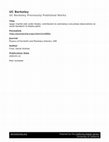
Physics of the Earth and Planetary Interiors, Feb 1, 2020
Observations of travel time anomalies of inner core-sensitive PKPdf seismic body waves, as a func... more Observations of travel time anomalies of inner core-sensitive PKPdf seismic body waves, as a function of path orientation with respect to the earth's rotation axis, have been interpreted as evidence of anisotropy in the inner core. Paths from earthquakes in the South Sandwich Islands to stations in Alaska show strongly anomalous travel times, with a large spread that is not compatible with simple models of anisotropy. Here we assess the impact of strong velocity heterogeneity under Alaska on the travel times, directions of arrival and amplitudes of PKPdf. We use 3D ray-tracing and 2.5D waveform modelling through a new, high-resolution tomography model of the upper mantle beneath Alaska. We find that the structure beneath Alaska, notably the subducting slab, is reflected in the patterns of these PKPdf observations, and this can be replicated by our model. We also find similar patterns in observed teleseismic P waves that can likewise be explained by our slab model. We conclude that at least 2 s of the travel time anomaly often attributed to inner core anisotropy is due to slab effects in the upper mantle beneath Alaska.
Comptes Rendus Geoscience, Sep 1, 2011
Towards improving ambient noise tomography using simultaneously curvelet denoising filters and SE... more Towards improving ambient noise tomography using simultaneously curvelet denoising filters and SEM simulations of seismic ambient noise La transforme´e en curvelet et les simulations nume´riques de bruit offrent une possibilited 'ame´liorer les images tomographiques obtenues a `partir de corre´lations de bruit

Geophysical Journal International, Aug 1, 2005
We present a new tomographic method based on the non-linear least-squares inversion of seismogram... more We present a new tomographic method based on the non-linear least-squares inversion of seismograms using the spectral elements method (SEM). The SEM is used for the forward modelling and to compute partial derivatives of seismograms with respect to the model parameters. The main idea of the method is to use a special data reduction scheme to overcome the prohibitive numerical cost of such an inversion. The SEM allows us to trigger several sources at the same time within one simulation with no incremental numerical cost. Doing so, the resulting synthetic seismograms are the sum of seismograms due to each individual source for a common receiver and a common origin time, with no possibility to separate them afterward. These summed synthetics are not directly comparable to data, but using the linearity of the problem with respect to the seismic sources, we can sum all data for a common station and a common zero time, and we perform the same operation on synthetics. Using this data reduction scheme, we can then model the whole data set using a single SEM run, rather than a number of runs equal to the number of events considered, allowing this type of inversion to be feasible on a reasonable size computer. In this paper we present tests that show the feasibility of the method. It appears that this approach can work owing to the combination of two factors: the off-path sensitivity of the long-period waveforms and the presence of multiple-scattering, which compensate for the loss of information in the summation process. We discuss the advantages and drawbacks of such a scheme.

Geophysical Journal International, Oct 14, 2017
We present the results of synthetic tests that aim at evaluating the relative performance of thre... more We present the results of synthetic tests that aim at evaluating the relative performance of three different definitions of misfit functionals in the context of 3-D imaging of shear wave attenuation in the earth's upper mantle at the global scale, using long-period full-waveform data. The synthetic tests are conducted with simple hypothetical upper-mantle models that contain Q μ anomalies centred at different depths and locations, with or without additional seismic velocity anomalies. To build synthetic waveform data sets, we performed simulations of 50 events in the hypothetical (target) models, using the spectral element method, filtered in the period range 60-400 s. The selected events are chosen among 273 events used in the development of radially anisotropic model SEMUCB-WM1 and recorded at 495 stations worldwide. The synthetic Z-component waveforms correspond to paths and time intervals (fundamental mode and overtone Rayleigh waves) that exist in the real waveform data set. The inversions for shear attenuation structure are carried out using a Gauss-Newton optimization scheme in which the gradient and Hessian are computed using normal mode perturbation theory. The three different misfit functionals considered are based on time domain waveform (WF) and waveform envelope (E-WF) differences, as well as spectral amplitude ratios (SA), between observed and predicted waveforms. We evaluate the performance of the three misfit functional definitions in the presence of seismic noise and unresolved S-wave velocity heterogeneity and discuss the relative importance of physical dispersion effects due to 3-D Q μ structure. We observed that the performance of WF is poorer than the other two misfit functionals in recovering attenuation structure, unless anelastic dispersion effects are taken into account in the calculation of partial derivatives. WF also turns out to be more sensitive to seismic noise than E-WF and SA. Overall, SA performs best for attenuation imaging. Our tests show that it is important to account for 3-D elastic effects (focusing) before inverting for Q μ . Additionally, we show that including high signal-to-noise ratio overtone wave packets is necessary to resolve Q μ structure at depths greater than 250 km.
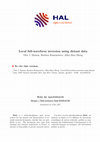
HAL (Le Centre pour la Communication Scientifique Directe), Apr 27, 2014
Imaging remote objects in the deep Earth, such as, subducting slabs, mantle plumes, or large low ... more Imaging remote objects in the deep Earth, such as, subducting slabs, mantle plumes, or large low shear velocity provinces and ultra low velocity zones is key for understanding Earth's structure and the geodynamical processes involved as it cools. In order to image these structures, we developed a strategy for performing regional-scale full-waveform inversions at arbitrary location inside the Earth [1]. Our approach is to confine wave propagation computations inside the region to be imaged. This local wavefield modeling is used in combination with wavefield extrapolation techniques in order to obtain synthetic seismograms at the surface of the Earth [2]. This allows us to evaluate a misfit functional and sensitivity kernels can then be computed locally using the adjoint state method . The Green's functions needed for extrapolating the wavefield are computed once for all in a 3D reference Earth model using the spectral element software Specfem/3DGLOBE. We will present benchmark tests demonstrating that the proposed method allows us to image 3D localized structures -this without having to model wave propagation in the entire Earth at each iteration, which is prohibitively costly, thus improving the feasibility of accurate imaging of regional structures anywhere in the Earth using numerical methods. We will show that our method permits to account for additional data in regional inversions, that is to account for distant earthquakes that are located outside the region of the study -preliminary results for the tomography of the north American continent will be presented.
Towards improving ambient noise tomography using simultaneously curvelet denoising filters and SE... more Towards improving ambient noise tomography using simultaneously curvelet denoising filters and SEM simulations of seismic ambient noise La transforme´e en curvelet et les simulations nume´riques de bruit offrent une possibilited 'ame´liorer les images tomographiques obtenues a `partir de corre´lations de bruit

How cratons-extremely stable continental areas of the Earth's crust-formed and remained largely u... more How cratons-extremely stable continental areas of the Earth's crust-formed and remained largely unchanged for more than 2,500 million years is much debated. Recent studies of seismic-wave receiver function data have detected a structural boundary under continental cratons at depths too shallow to be consistent with the lithosphere-asthenosphere boundary, as inferred from seismic tomography and other geophysical studies. Here we show that changes in the direction of azimuthal anisotropy with depth reveal the presence of two distinct lithospheric layers throughout the stable part of the North American continent. The top layer is thick (,150 km) under the Archaean core and tapers out on the surrounding Palaeozoic borders. Its thickness variations follow those of a highly depleted layer inferred from thermo-barometric analysis of xenoliths. The lithosphere-asthenosphere boundary is relatively flat (ranging from 180 to 240 km in depth), in agreement with the presence of a thermal conductive root that subsequently formed around the depleted chemical layer. Our findings tie together seismological, geochemical and geodynamical studies of the cratonic lithosphere in North America. They also suggest that the horizon detected in receiver function studies probably corresponds to the sharp mid-lithospheric boundary rather than to the more gradual lithosphere-asthenosphere boundary.
Geophysical Research Letters, May 7, 2021
HAL is a multi-disciplinary open access archive for the deposit and dissemination of scientific r... more HAL is a multi-disciplinary open access archive for the deposit and dissemination of scientific research documents, whether they are published or not. The documents may come from teaching and research institutions in France or abroad, or from public or private research centers. L'archive ouverte pluridisciplinaire HAL, est destinée au dépôt et à la diffusion de documents scientifiques de niveau recherche, publiés ou non, émanant des établissements d'enseignement et de recherche français ou étrangers, des laboratoires publics ou privés.
The existence of a thin, weak asthenospheric layer beneath Earth’s lithospheric plates is consist... more The existence of a thin, weak asthenospheric layer beneath Earth’s lithospheric plates is consistent with existing geological and geophysical constraints, including Pleistocene glacio-isostatic adjustment, modeling of gravity anomalies, studies of seismic anisotropy, and post-seismic rebound. Mantle convection models suggest that a pronounced weak zone beneath the upper thermal boundary layer (lithosphere) may be essential to the plate tectonic style of convection found on Earth. The asthenosphere is likely related to partial melting and the presence of water in the sub-lithospheric mantle, further implying that the long-term evolution of the Earth, including the apparently early onset and persistence of plate tectonics, may be controlled by thermal regulation and volatile recycling that maintain a geotherm that approaches the wet mantle solidus at asthenospheric depths.

Recent studies of seismic-wave receiver function data have detected a structural boundary under c... more Recent studies of seismic-wave receiver function data have detected a structural boundary under continental cratons at 100–140 km depths, which is too shallow to be consistent with the lithosphere–asthenosphere boundary, as inferred from seismic tomography and other geophysical studies. This leads to the conclusion that 1) the cratonic lithosphere may be thinner than expected, contradicting tomographic and other geophysical or geochemical inferences, or 2) that the receiver function studies detect a mid-lithospheric discontinuity rather than the LAB. On the other hand, several recent studies documented significant changes in the direction of azimuthal anisotropy with depth that suggest layering in the anisotropic structure of the stable part of the North American continent. In particular, Yuan and Romanowicz (2010) combined long period surface wave and overtone data with core refracted shear wave (SKS) splitting measurements in a joint tomographic inversion. A question that arises i...

The EGU General Assembly, 2017
The accurate imaging of localized geological structures inside the deep Earth is key to understan... more The accurate imaging of localized geological structures inside the deep Earth is key to understand our planet and its history. Since the introduction of the Preliminary Reference Earth Model, many generations of global tomographic models have been developed and give us access to the 3D structure of the Earth's interior. The latest generation of global tomographic models has emerged with the development of accurate numerical wavefield computations in a 3D earth combined with access to enhanced HPC capabilities. These models have sharpened up mantle images and unveiled relatively small scale structures that were blurred out in previous generation models. Fingerlike structures have been found at the base of the oceanic asthenosphere, and vertically oriented broad low velocity plume conduits [1] extend throughout the lower mantle beneath those major hotspots that are located within the perimeter of the deep mantle large low shear velocity provinces (LLSVPs). While providing new insi...

The presence of seismic anisotropy in the crust and upper mantle is well documented, with relativ... more The presence of seismic anisotropy in the crust and upper mantle is well documented, with relatively good consensus on its origins, owing to direct observations in the field and laboratory experiments on mineral crystal structure and deformation properties, in a range of pressures and temperatures that is readily accessible. The situation is much less clear for the deep mantle, due to poor sampling by seismic waves, contamination by upper mantle effects, and the difficulty for mineral physics deformation experiments to reach relevant physical conditions. However, in the last decade, there has been significant progress in both fields, and a new and promising approach has emerged, aiming at combining seismic observations of anisotropy in the deep Earth with knowledge from geodynamics modelling and constraints from mineral physics, towards understanding deformation patterns related to global mantle circulation. Here we review the present state of knowledge on deep mantle anisotropy in ...




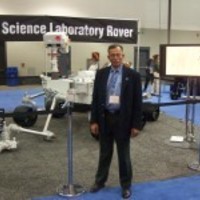

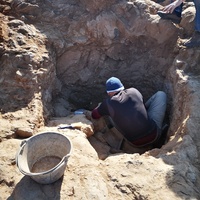




Uploads
Papers by Barbara Romanowicz